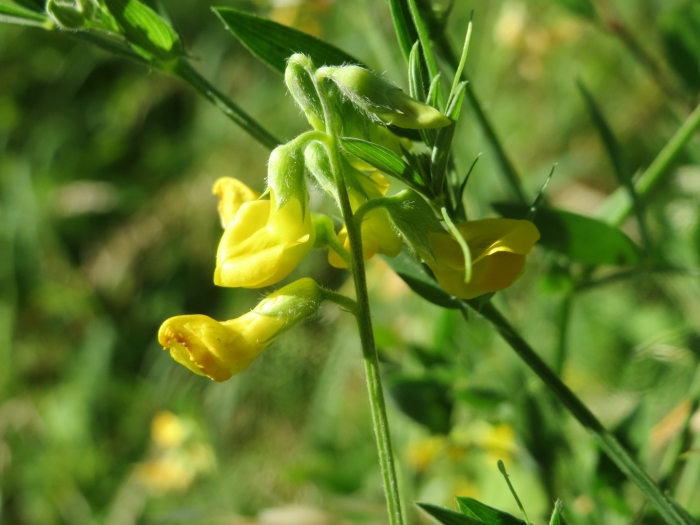Meadow Vetchling
(Lathyrus pratensis)
Meadow Vetchling (Lathyrus pratensis)
/
/

Andreas Rockstein
CC BY-SA 4.0
Image By:
Andreas Rockstein
Recorded By:
Copyright:
CC BY-SA 4.0
Copyright Notice:
Photo by: Andreas Rockstein | License Type: CC BY-SA 4.0 | License URL: http://creativecommons.org/licenses/by-sa/4.0/ | Rights Holder: Andreas Rockstein | Publisher: iNaturalist | Date Created: 2016-07-19T18:07:31-07:00 |
























Estimated Native Range
Summary
Lathyrus pratensis, commonly known as Meadow Vetchling, Yellow Pea, or Meadow Pea-vine, is a perennial herbaceous legume native to a variety of habitats including meadows, pastures, grassy road verges, and open woodlands across Europe and temperate Asia. It typically grows up to 4 feet in height and features tendrils that allow it to climb neighboring vegetation. The plant produces bright yellow, pea-like flowers from late spring to mid-summer, which are highly attractive to bees and other pollinators. Following flowering, it forms long, black seed pods.
Meadow Vetchling is valued for its nitrogen-fixing abilities, which improve soil fertility, and its vibrant yellow flowers that add color to wildflower meadows and informal garden settings. It is also used in agriculture as a forage plant for livestock. In cultivation, it prefers full sun to partial shade and thrives in moist, well-drained soils. While generally low-maintenance, it can become invasive if not managed properly.CC BY-SA 4.0
Meadow Vetchling is valued for its nitrogen-fixing abilities, which improve soil fertility, and its vibrant yellow flowers that add color to wildflower meadows and informal garden settings. It is also used in agriculture as a forage plant for livestock. In cultivation, it prefers full sun to partial shade and thrives in moist, well-drained soils. While generally low-maintenance, it can become invasive if not managed properly.CC BY-SA 4.0
Plant Description
- Plant Type: Herb, Vine
- Height: 1-2 feet
- Width: 1-3 feet
- Growth Rate: Moderate
- Flower Color: Yellow
- Flowering Season: Spring, Summer
- Leaf Retention: Deciduous
Growth Requirements
- Sun: Full Sun
- Water: Medium
- Drainage: Medium
Common Uses
Low Maintenance
Natural Habitat
Native to meadows, pastures, grassy road verges, and open woodlands across Europe and temperate Asia
Other Names
Common Names: Meadow Vetchling, Yellow Pea, Meadow Peavine, Yellow Vetchling, Ervilhaca-Do-Campo
Scientific Names: , Lathyrus pratensis, Lathyrus cashmericus, Lathyrus cashmericus, Lathyrus denudatus, Lathyrus lusseri, Lathyrus lusseri, Lathyrus pratensis f. pallidiflorus, Lathyrus pratensis f. pallidiflorus, Lathyrus pratensis f. sepium
GBIF Accepted Name: